Buying a new laptop is always a balancing act. We want a laptop to be portable, but if you're into gaming, you also want the power to play your favorite titles at higher quality. Sure, games like Fortnite can run on a potato by tweaking some settings, but everyone prefers when games look the best they can.
Thankfully, with external GPUs (eGPU), you can have the best of both worlds. eGPUs can turn any laptop into a gaming rig in a flash, provided you can be plugged in. I have a Khadas Mind Graphics I've been using for quite some time now, and it's an excellent way to play my favorite PC games in higher quality without sacrificing portability when I need it. It's not a perfect solution, but it might be perfect for your needs.
Power when you need it, portability when you don't
External GPUs add versatility
The core concept of an eGPU is a very compelling one. Typically, a graphics card has to be inside a computer, whether it's a laptop or desktop, which adds bulk and heat to the machine. For a desktop, this may not make much of a difference, but if you have a laptop, being forced to carry that GPU with you at all times can be impractical. It makes it so that if you want a laptop for school, you might have to go with something that can't play games as well, or you'll have to deal with the back pain from carrying a heavy gaming laptop.
Thanks to the power of Intel's Thunderbolt protocol and the PCIe tunneling capabilities it offers, external GPUs can connect to your laptop as if they were inside the computer (with some caveats I'll touch on later). This means you can use one to play your favorite games in high fidelity even if you have a thin and light laptop. Sure, you can't carry a GPU around everywhere, but playing PC games on the go isn't something I care about doing that often, especially because it would kill the battery anyway. Being able to play games at home but still carry a much more lightweight laptop when I just want to work or browse the web.
With some modern laptops, you can still game without the external GPU, so you can just have a lesser experience on the go, and then crank up the visuals at home, connected to a bigger screen. PC gaming handhelds leverage the same principle, but you can do this with any laptop, too.
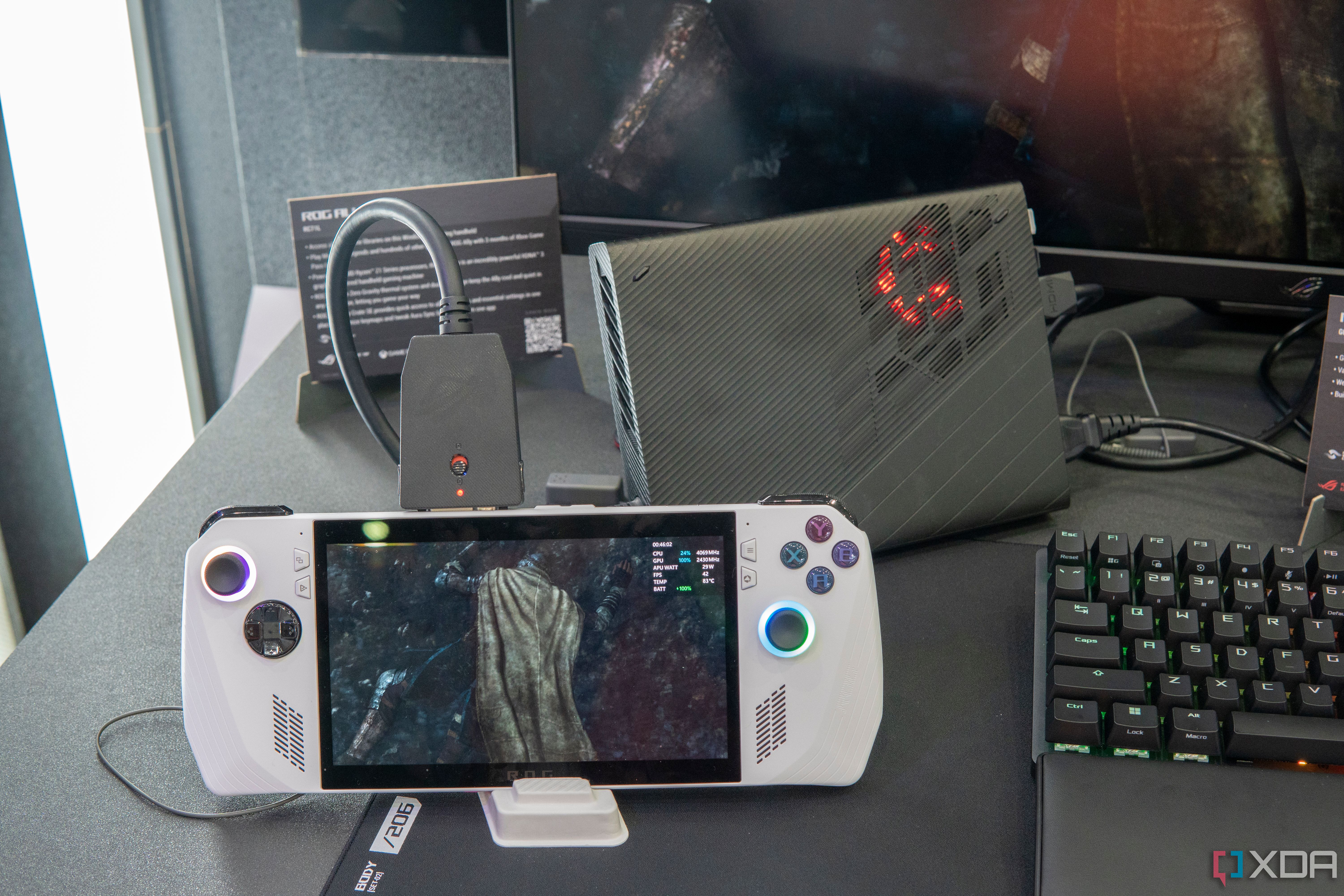
Related
5 reasons eGPU setups might be making a comeback
The eGPU market has been stagnant for years but I believe it's ready to rumble again.
I can play basically anything
And make games look way better, too
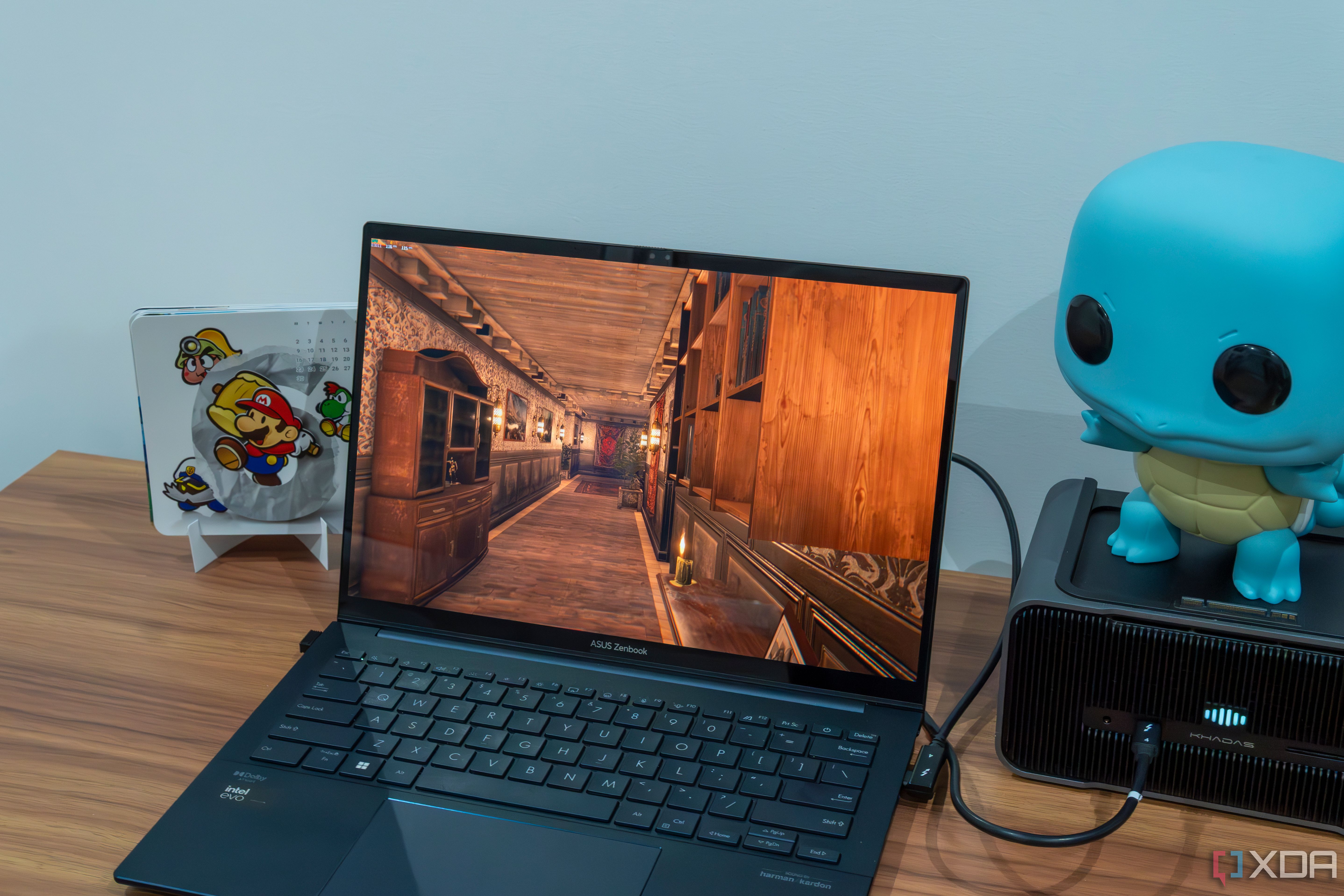
The external GPU I've been using is the Khadas Mind Graphics, which is an integrated solution, meaning the GPU is built into the enclosure and can't be removed. In this case, the GPU is a desktop Nvidia GeForce RTX 4060 Ti with 8GB of VRAM, so it's a pretty capable graphics card. I connected it to the early 2024 Asus Zenbook 14 OLED, which has an Intel Core Ultra 7 155H processor, and I tried to play some games for the sake of comparison. I tried Apex Legends, Dying Light, and Hellblade: Senua's Sacrifice, and I played these games on the laptop's built-in display.
To compare these, I set up the graphics options with the GPU connected so that I could play smoothly, then I tried removing the GPU to see how the games would play with integrated graphics. Here's a look at the approximate framerates I got:
|
1920x1200, Medium preset, DirectX 11 |
79FPS |
47FPS |
|
2880x1800, High preset |
103FPS |
33FPS |
|
2880x1800, mostly very high settings |
79FPS |
24FPS |
It really makes a world of difference when you can run these games with all the power of a dedicated GPU, especially with older processors that didn't have great integrated graphics. Laptops with Intel's 13th-generation processors or newer are not great for gaming, but an external GPU can completely change that. Even this Intel Core Ultra model, which is a big step up already, greatly benefits from an external GPU.
I've run more scientific tests in the past using a gaming handheld, which I recommend checking out if you want a deeper dive into external GPUs and how they can be helpful.
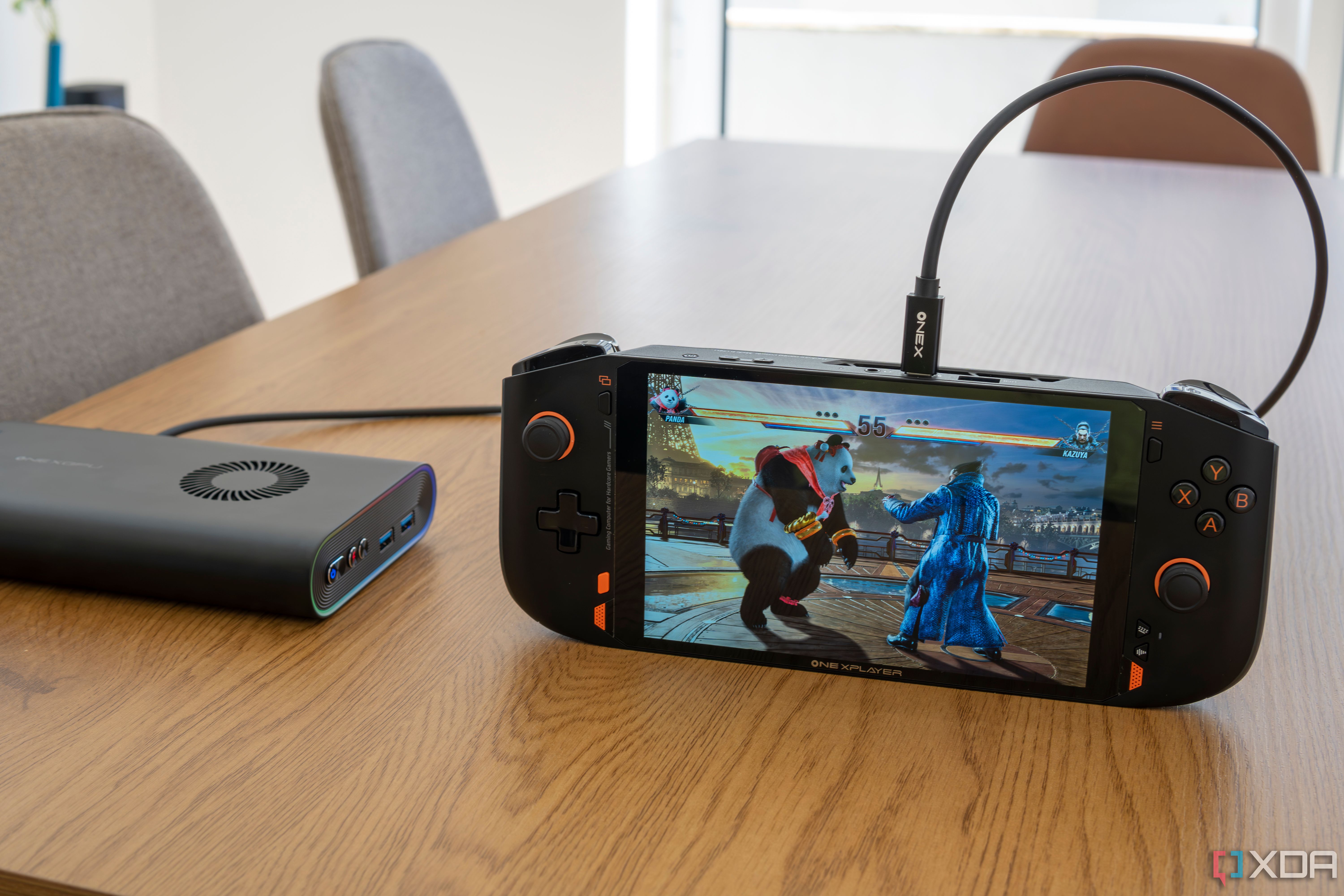
Related
We tested gaming handhelds with external GPUs — here’s how it went
Most gaming handhelds have external GPU options, but how much of a difference do they really make?
There are two kinds of eGPUs
Upgradeable or not?
When talking about eGPUs, there are two main categories they can be split into. You have eGPU enclosures, which are just barebones boxes, often with a few extra ports, where you can plug in a full-size desktop GPU, and you have integrated solutions like the Mind Graphics.
The benefit with a separate enclosure is that you might be able to upgrade the power of the GPU over time by spending money only on the GPU itself. You can keep the same enclosure or dock for a long time, as most GPUs don't really require a new version of PCIe that frequently. This can be cheaper in the long run, and it gives you more flexibility since you can choose the GPU you want at any given time, rather than being stuck with the model that manufacturers chose to include. However, you can also be limited due to the size of the enclosure as GPUs keep getting bigger and bigger, and it also requires some research on your part to figure out whether a specific GPU can support the power limit of the enclosure.
An integrated solution takes most of the guesswork out of it, meaning you can rest assured the included GPU works perfectly in the confines of that design. There's less you need to setup and figure out, and because they're fully integrated, these designs are often smaller, so you still have some semblance of portability that's harder to get with a separate enclosure and GPU. On the flip side, this means you'll have to pay more for each upgrade, as getting a new GPU will always mean getting a new enclosure along with it.
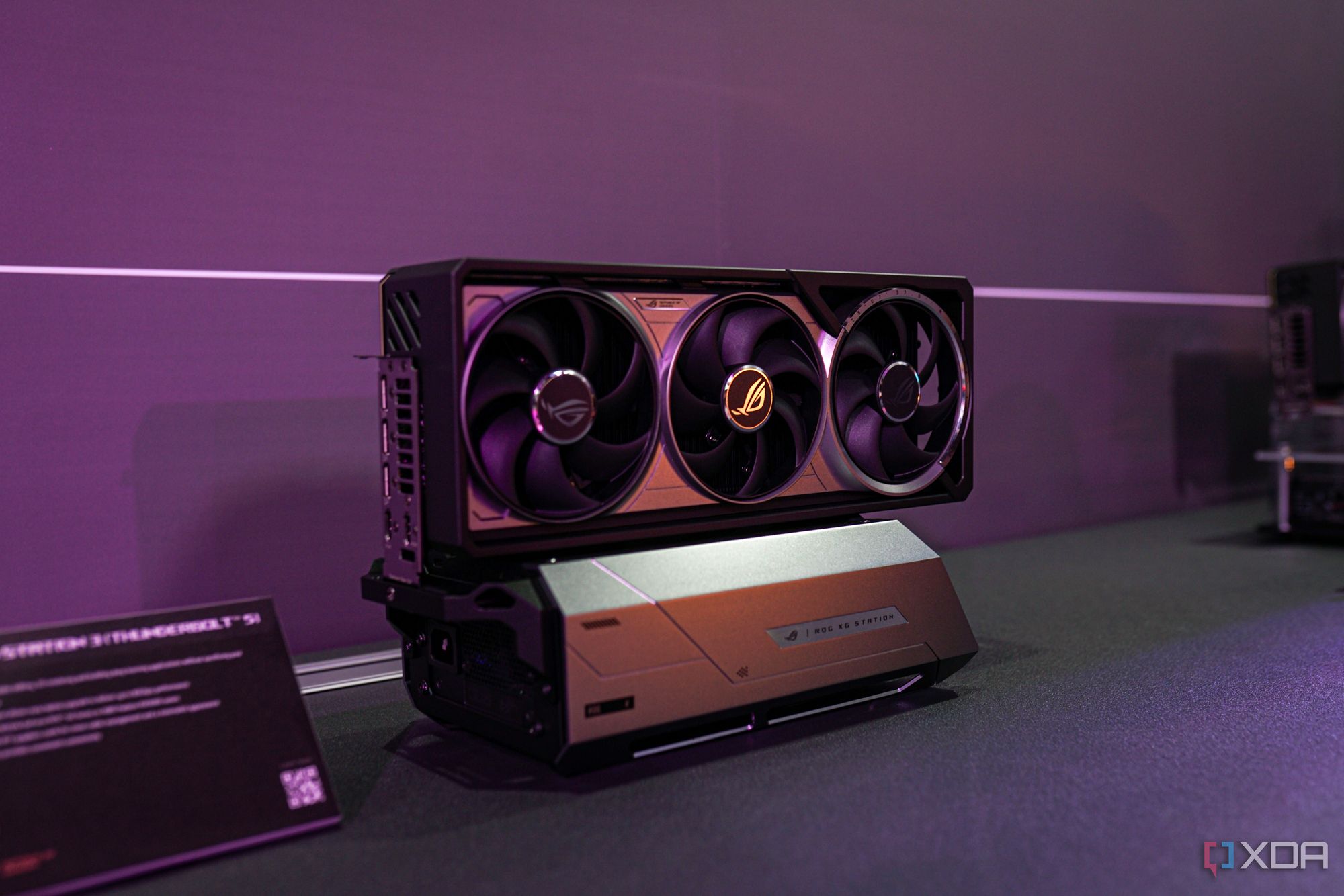
Related
6 sneaky things no one tells you about eGPUs
We've had eGPUs for decades, but they're still misunderstood.
The downsides of eGPUs
It's not all benefits

As great as eGPUs are for laptop users, there are some downsides that are worth remembering. Most eGPUs work via Thunderbolt 3 or 4 (and more recently USB4), and this is a technology that not every laptop has. If you're looking to use an external GPU, you'll likely need a mid-range to high-end modern laptop, which limits your options a bit, and increases the total cost of your setup quite a bit. These devices have become more common, but it's extremely unlikely your $500 laptop can support an external GPU. And if you're thinking of something like Thunderbolt 5, that's even rarer, both on laptops and eGPUs.
Another problem with Thunderbolt is the bandwidth. Thunderbolt 3 and 4 both support 40Gbps bandwidth in total, and there are four PCIe lanes passed through the connection. Now, a desktop GPU usually has a 16-lane connection, which means it can have up to four times the bandwidth. What this means is that communication between your PC and the GPU can be noticeably slower, and in some games, this might result in worse performance and some stuttering, at least compared to a computer that just has the GPU built in. Some newer connection options, such as OCuLink, can offer more bandwidth, but OCuLink connectors are basically non-existent on laptops, with only a few handhelds supporting it.
And though I've already mentioned it, it's also important to remember that external GPUs need to be plugged into an outlet, and they're fairly big. It's not something you typically want to carry in a backpack, so it's not the ideal experience for gaming on the go. It's a solution made for gaming at home, while being able to take your main device with you for other tasks. It's not a setup that works for everyone, though it still has its uses.
You might think it's better to just buy a separate desktop and laptop at that point, but that solution will be even more expensive, and then you'll have two completely separate sets of data, which you may not want. With an eGPU, all your files are in the same place and you can access them more easily at any time, only the power level differs.
eGPUs are great... for some people
I've been a big fan of external GPUs ever since I tried my first once, and I still think there is or should be a market for it. If you have a high-end ultrabook and you'd like to do some gaming on the side, an eGPU is a great way to get started, and it lets you keep all your files and everything as it is, just with the extra power to be able to play just about any game you want.
Even with their downsides, I'd say these are still the perfect solution for some people, and with the rise of PC gaming handhelds, we're likely going to see a lot more of them in the next few years. To me, that sounds like a positive, so I'm excited for the future.
.png)
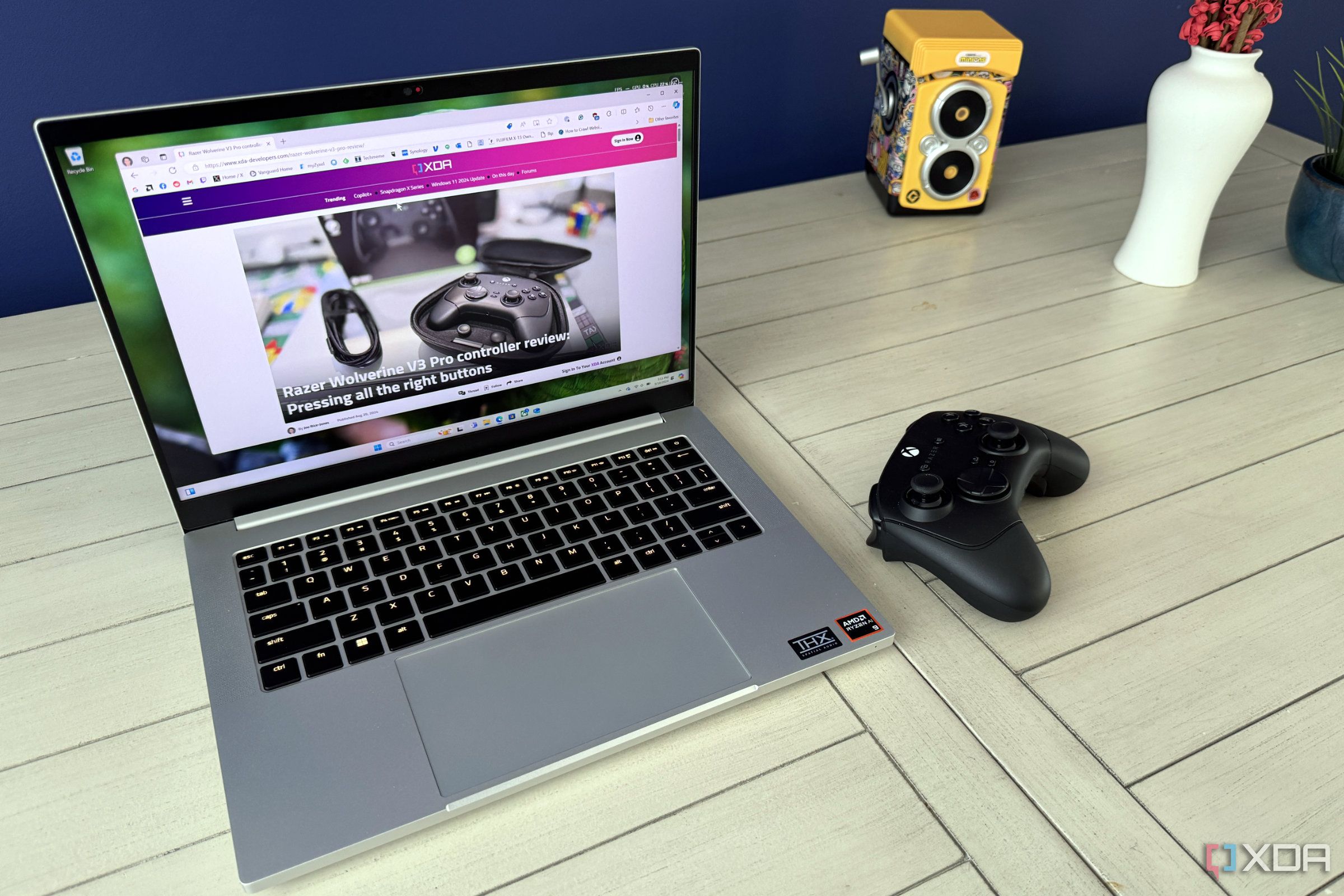
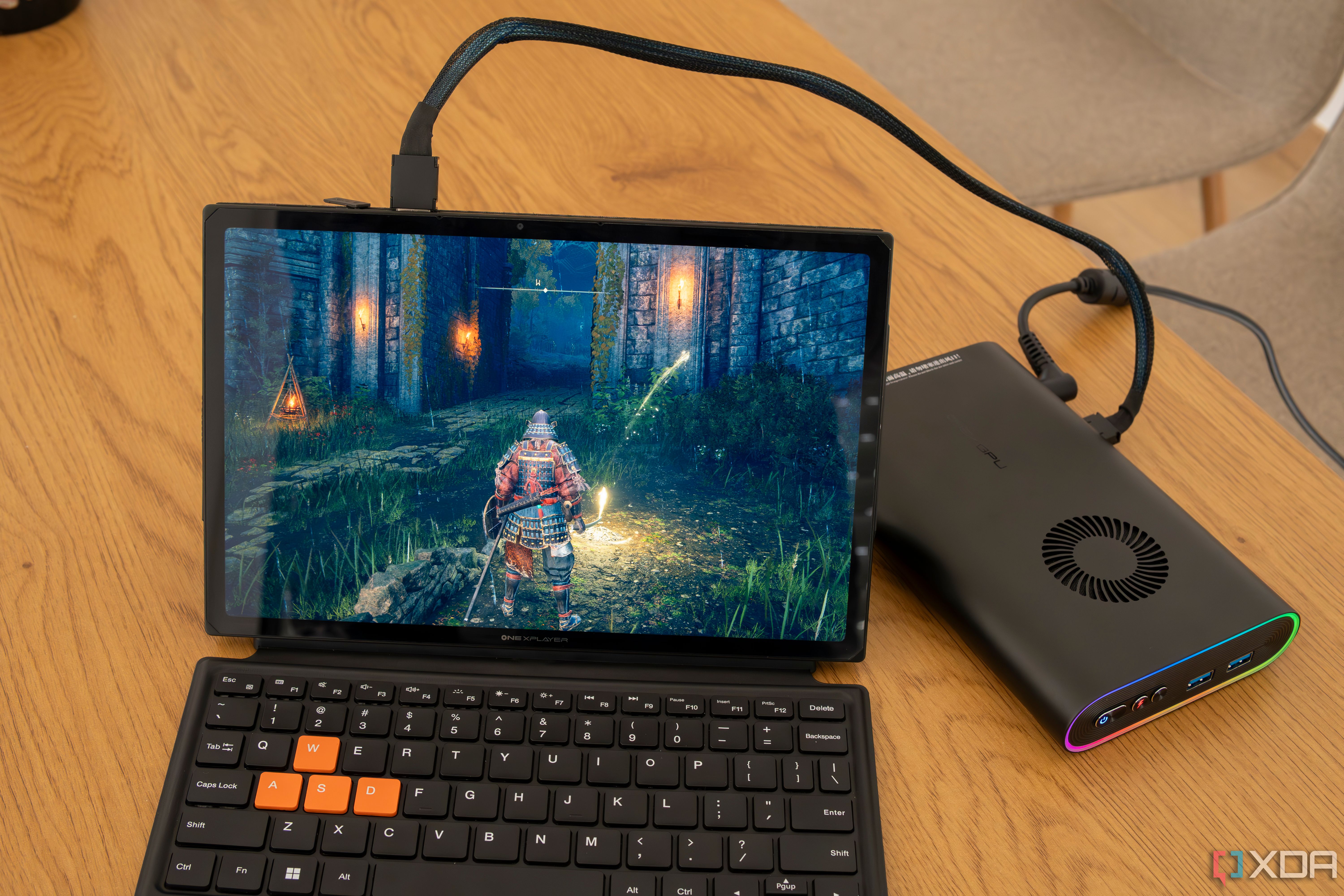









 English (US) ·
English (US) ·